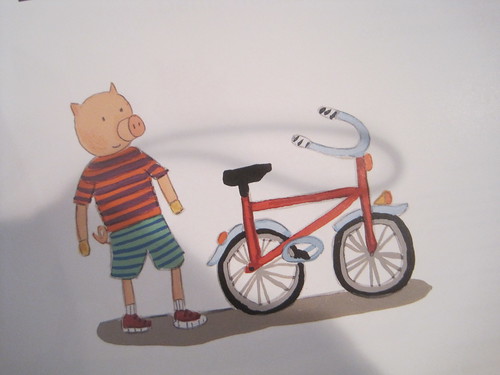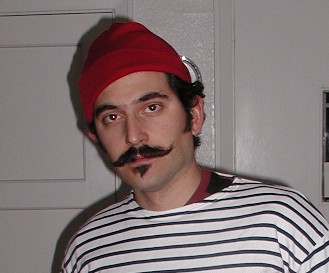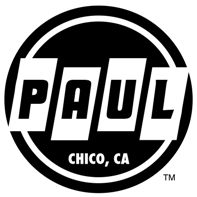The first is from the children's book Little Pig is Capable.
While Aida seemed to enjoy the book, I found it a bit odd and disjointed. The bicycle barely features in the tale despite the prominent cover picture. 


Stunning really. The frame angles are forgivable. The chain leading to the rear tire is not. The front training wheels are just confusing. Even from a stylized point of view there is little excuse for this. I imagine the author, Denis Roche, has not ridden let alone seen a bicycle in decades. This being the internet, I look forward to a response from Ms. Roche.






9 comments:
I've thought of doing something similar for a while now but never had the follow through. Poor rendering is rampant. I'll need to document some too.
Ever see "Duck on a Bike"? That artists did his/her homework and sets the bar pretty high with multiple bike styles drawn accurately. Just read it last night too.
Let me know when you find some egregious examples.
I will attempt to get "duck on a bike" at the next library trip. Sounds like a winner.
Dearest Mr. Saleh,
Clearly you have been too busy reading children's books to make it through your copy of The Golden Age of Handbuilt Tricycles. Otherwise, you would have immediately recognized the 1931 Schulz constructeur racing tricycle in the above referenced work. The full metal fenders and integrated lighting should have been dead giveaways. They are accurate even down to Schulz's trademark fender flares, which protect the lights from spray even on high speed alpine descents.
You were correct to scoff at the geometry of the '31 Schulz. At the time, the junior tricycle races were nearing their peak popularity, and while many francs were wagered on the outcomes, precious few were available for research and development. It was left to the small shops of the various tricycle constructeurs to perfect the machines by trial and error. Several constructeurs (Schulz among them) had concluded that front wheel flop was the primary determinant of a lightweight trike's handling at the limit. The 90 degree head angle and zero fork offset were the natural conclusions of this line of thinking.
The rear roues latérales (sidewheels), which you call "training wheels", had replaced the traditional full size third wheel of all racing trikes by the late 1920s. This reduced weight considerably while staying within the strict rules on what constituted a tricycle. In particular, it removed the need for a second rear metal fender, light, and associated parallel wiring. The sidewheel design also allowed a young junior racer to use the same machine for bicycle races, as shown in panel two.
You'll note that the single front bras de sécurité (safety arm), which you again mistake for training wheels, is located on the right hand side of the tricycle. The junior trike races in Paris were mass start by the early 30's. The young riders lined up from the left edge of the track and circled in a counterclockwise direction. The bras de sécurité allowed the racers to concentrate on speed rather than whether their rear sidewheels were in danger of entaglement with adjacent machines. The intricate paired radial spoking pattern in the front wheel ensured that an errant BDS would deflect off harmlessly. As an aside, all of the currently popular radial paired spoke patterns derive from the French Tricycle Races of the 20's and 30's!
Of course, the most amazing feature of the Schulz was the entraînement par vis à tube diagonal (downtube screw drive). Can you tell how it works? Ms. Roche has provided unusually elegant sketches of its operation. The pedals do not drive a chain but instead drive a small gear which in turn drives the elliptical gear on the right side of the frame. The elliptical gear meshes with a gear on the downtube which "floats" on two bearings where it connects to the head and seat tubes (all of the tubes lie to the right of the plane of the wheels!). A reversing gear causes the downtube to turn counterclockwise, rubbing the rear tire and causing it to turn forward.
As an aside, the right-hand frame, reversing gear design was used to avoid a patent infringement with an earlier left-hand frame direct drive design. You'll note that the "lefty" forks from Cannondale are also derivative of French tricycle racing but again reversed the side to avoid patent infringement!
Of course, it would later be shown that Schulz's entraînement par vis à tube diagonal was much less efficient than chain drive, but an unusually strong succession of Schulz riders masked this fact for years.
Hope this helps, and I'm sure Ms. Roche will have a reply soon with perhaps more information on this stunning Schulz.
All the best,
Joe 'trois' B.
When the Mrs. and I are out on the shops and have a look at artwork, She may ooh and ahh over a painting (print) of a cafe' scene with a bicycle in it somewhere.
I will register disgust as the bike will have about 3 or 4 tubes to many, or the spokes gather at a one sided hub.
I am schooling my 16 yr old son in properly drawing bikes. He'll be a millionare after a few bike/art shows...
John in Chesapeake
Joe B.
Ah, of course. Apparently I am out of my league here.
John,
Uh, something, what Joe said...
Oh, and I forgot to add that this series is awesome. Bicycle art has had this coming a long time.
Thanks for bringing up this subject.
When I worked at a publisher on textbooks for little kids there was rarely any bicycle in the graphics that looked good. Despite plenty of examples being around to copy, it happened only once and I was overjoyed.
"Duck on a Bike" is my favorite and was for a brief episode with Ramone. We especially like the double page spread of the farm animals with an enthralled look on their faces.
Probably the best and most accurate bicycle illustrations I've seen in a children's book. I had trouble returning it to the library, it was so fun.
Horrible bike drawings aside, can you imagine a more terrible title for a book? "Little Pig is Capable"? How about: "Little Pig's effort is satisfactory" or possibly "The Proficient Little Pig"?
Post a Comment